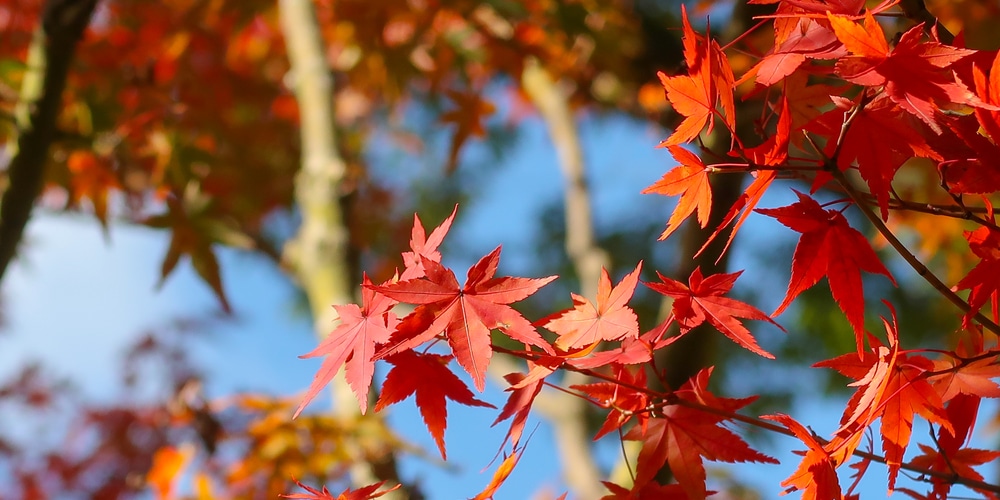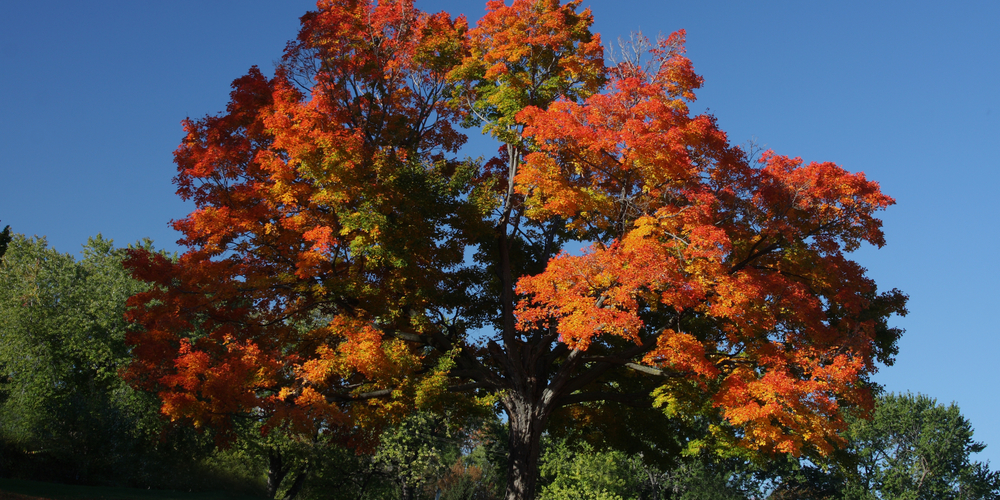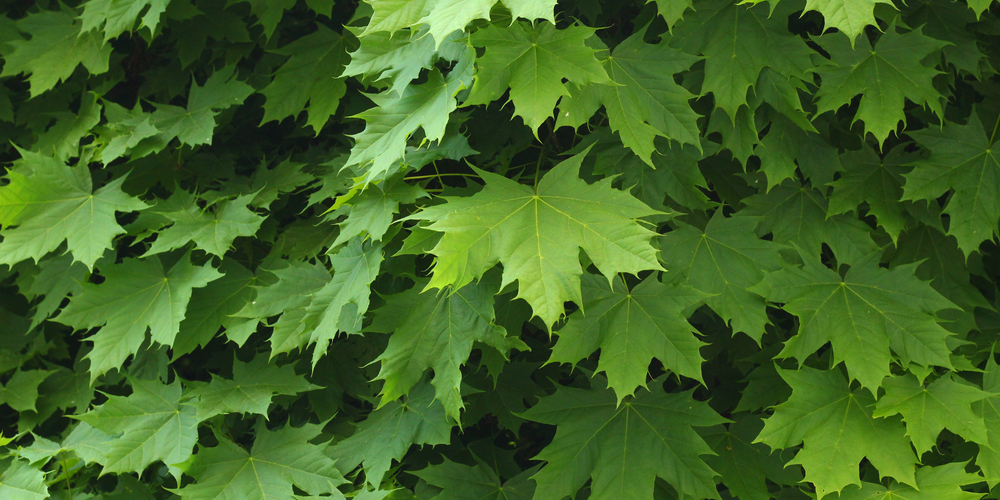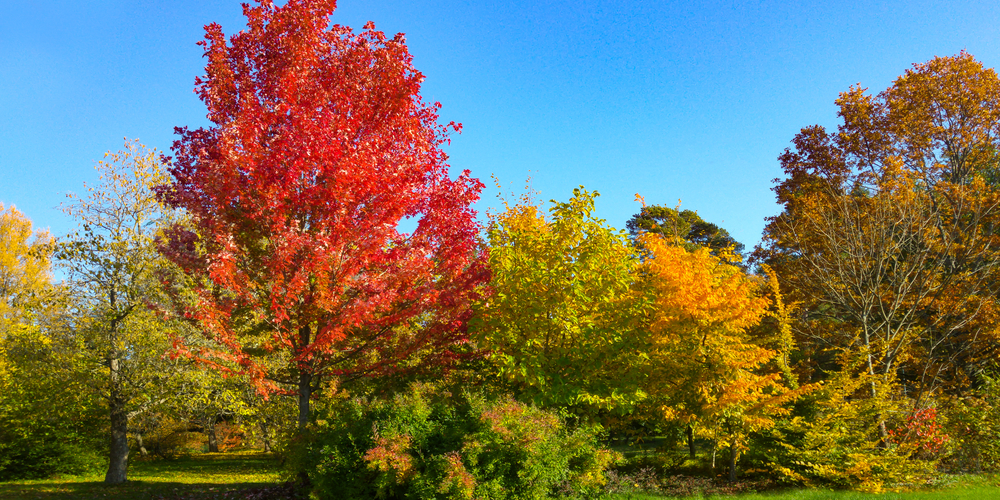Several maple trees grow well in Georgia and can provide a wide variety of benefits for both the home gardener and the maple syrup farmer. Some maple trees such as Silver Maple, Box Elder, and Red Maple grow fast and produce seeds that can germinate easily.
These species would only be considered invasive plants in certain parts of Georgia because they can quickly become out of control and cause problems. Let’s look at the best Maple Trees Georgia!
The best maple trees to plant in Georgia are:
Laceleaf Japanese Maple (Acer palmatum)
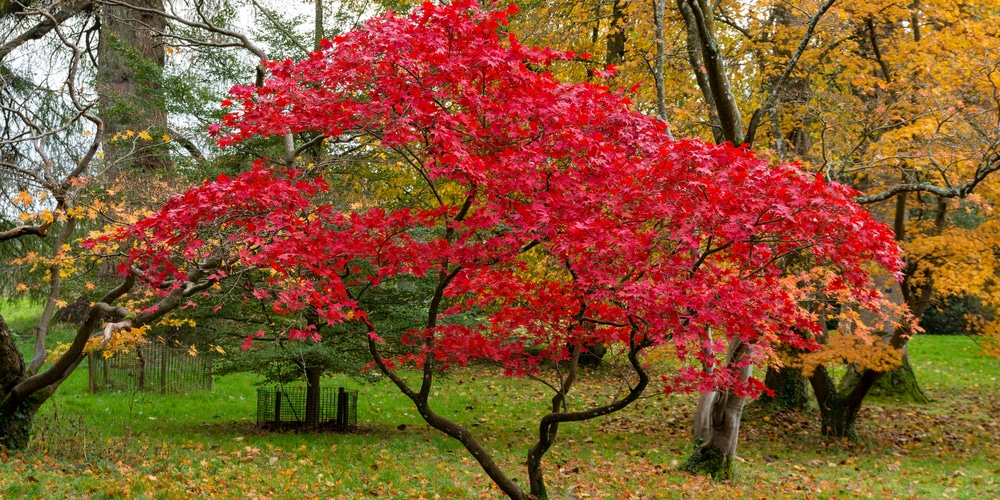
Arguably the most popular maple tree for homeowners in Georgia, the Laceleaf Japanese Maple makes a dramatic statement in any landscape. Known for its fine texture, this elegant tree displays light green leaves with subtle tones of cream and pink throughout the seasons.
The Laceleaf Japanese Maple grows best in full sun to partial shade and is adaptable. However, this tree should be protected from the afternoon sun as it can cause leaf scorch.
The Japanese Maple grows best in acidic soils with pH ranges of 5.5 to 6.8 but does well in the neutral ground. Laceleaf Japanese are shallow-rooted trees that require consistent watering, especially when young, but once established, they should only need water during dry spells or after a deep freeze has killed the leaves off.
As the Japanese Maples prefer not to have their roots disturbed, do not move them after planting even if they appear root bound in their pots. The maple tree will actually benefit from being placed close to drainage areas as it tends to rot if the soil frequently remains too wet.
Red Maple (Acer rubrum)
The Red Maple is a Georgia favorite for fall color and is often confused with the Silver Maple as both boast brilliant shades of orange, scarlet and maroon in autumn. While the Silver Maple tends to be a little more heat tolerant than the Red Maple, the latter outperforms its cousin in vigor, growth rate, and form during production years.
Although it has been known to suffer from insect defoliation problems, this MapleMaple thrives with regular water during dry spells or until established. The Red Maple does best in moist soils but will do well almost anywhere as long as good drainage. In fact, harsh conditions – such as drought stress- actually bring out striking autumn colors in the Red Maple.
Sugar Maple (Acer saccharum)
Another common maple tree in Georgia landscapes, Sugar Maple, is a slow-growing shade and ornamental tree that presents beautiful green foliage throughout all four seasons. Although this tree does not produce shade until it reaches 25 to 30 feet tall, it should be planted close enough to buildings or structures where its branches can provide summer shade for porches or walkways.
The Sugar Maple can be found along streets, parks, and college campuses due to its tolerance of pollution and attractive form during production years.
The Sugar Maple prefers moist but well-drained soils with pH ranging from slightly acidic to neutral. However, if your soil tends towards acidic, you will need to add lime each spring to maintain a neutral pH.
Like most maple tree varieties, the Sugar Maple requires full sun and deep watering during dry spells or after a deep freeze has killed the leaves off.
Norway Maple (Acer platanoides)
The Norway Maple is often confused with the Red Maple because of its similar red-orange autumn colors; however, there are some key differences in leaf shape and form that make this variety unique. While they both produce vibrant fall colors and prefer moist soils, Norway Maples tend to grow straighter and taller than their cousins with larger crowns that resemble a pyramid shape when young.
Grown throughout North America, the Norway Maple can be found across all of Georgia but tends to do best in areas such as Atlanta, where they can be planted close together to create a solid canopy of leaves. They are very shade tolerant and can grow in most soil types with pH ranges from 5.0 to 7.5, making them an attractive choice for homeowners who want to establish a quick-growing shade tree that is easy to care for throughout the seasons.
Red Sunset Maple (Acer rufinerve)
Like most other maples, the Red Sunset Maple is another beautiful maple tree variety that displays brilliant fall colors before dropping its leaves during the winter months. However, this variety holds onto its deep red-purple foliage long after the first frost, giving it some unique characteristics and extending its ornamental appeal through all four seasons without fail.
As with most maples, the Red Sunset Maple requires full sun to partial shade, well-draining soils, and regular water during growing seasons. They are extremely shade tolerant but do best in moist soil with pH ranges from 5.5 to 6.5. And while they are not quite as tough as Black Maples, Red Sunset Maples have some insect resistance which helps keep them healthy throughout their production years.
Black Maple (Acer nigrum)
Another tall maple tree variety, the Black Maple, is a popular choice for Georgia landscapes because its lush green foliage turns deep purple before dropping its leaves each fall. However, while this may be attractive during production years, it can often lead to early leaf drop problems if planted too close together or where drainage is poor, or trees are over pruned.
Black Maples require full sun and well-draining soil with pH ranges from 6.0 to 7.5. While they are not quite as tolerant of harsh conditions or pollution as Red Maple varieties, Black Maples prefer moist soils so that they will benefit from deep watering at least once per week during dry seasons. However, it is never a bad idea to check soil moisture every couple of days just in case.
Maple Trees Georgia: Conclusion
Many maples will grow well in Georgia, and although most prefer full sun and moist soils, a few varieties can tolerate other conditions. The key to success with maples is to make sure you select a species for your soil type and the amount of sunlight your lawn receives each day. Then be sure not to overwater or over prune, And don’t forget to replace your lawn with mulch around the trunks of trees to help prevent shallow root growth!
